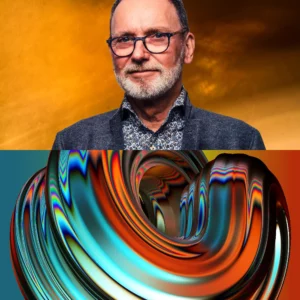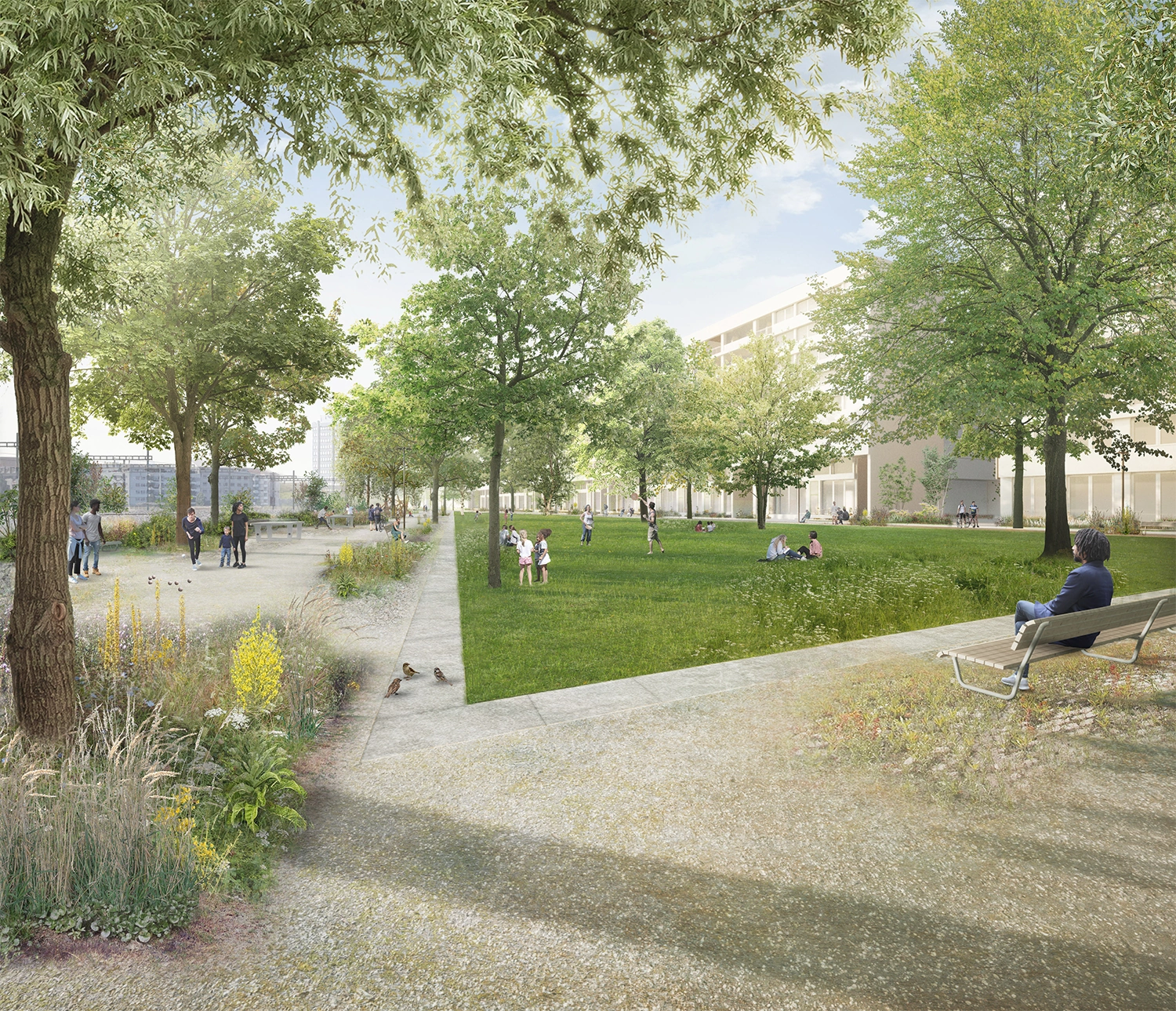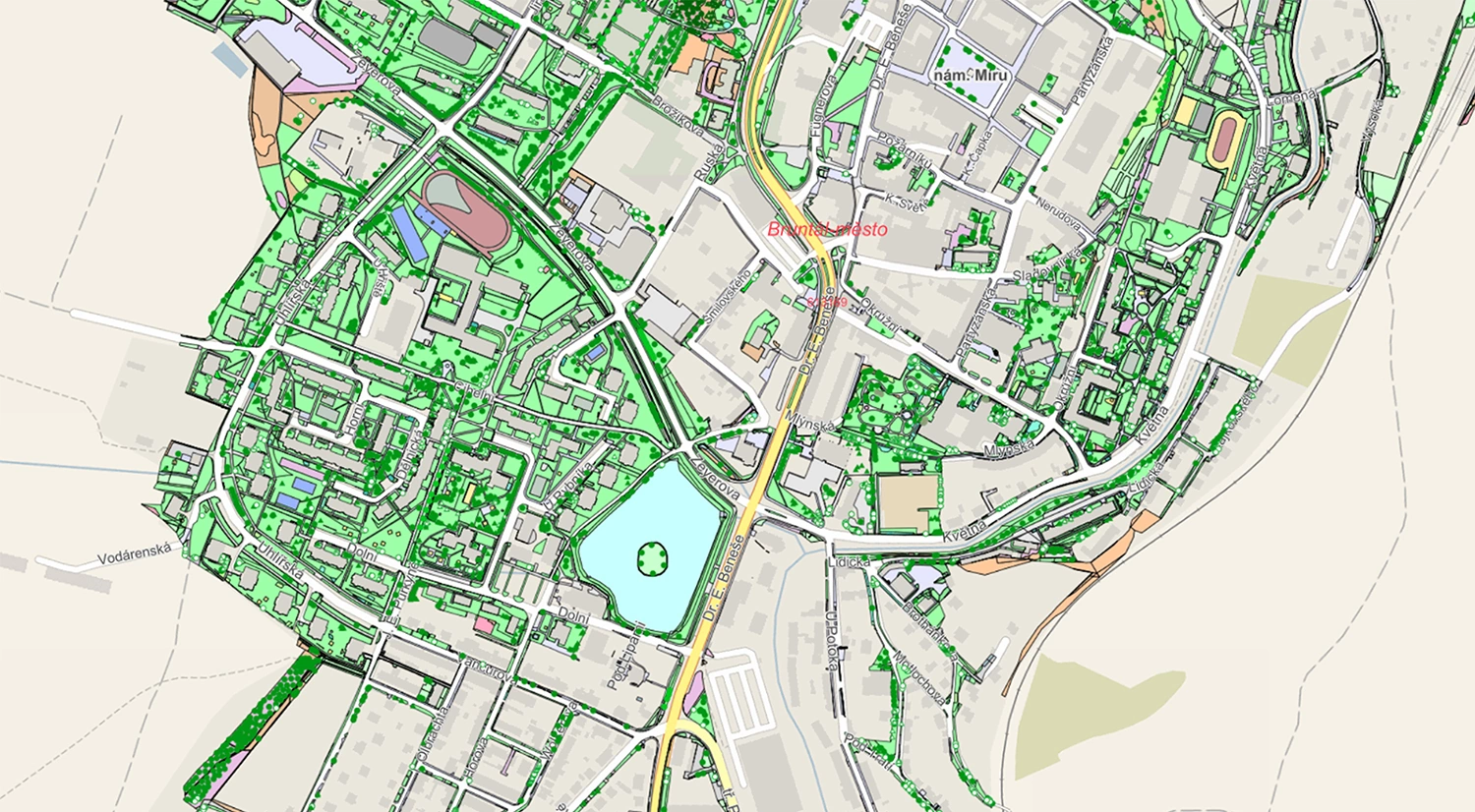- Season 6
- Episode 2
- Architecture, Governance, Urbanism
As land in cities becomes scarce and expensive, public spaces are bearing the brunt. Can new models of urban development reconcile communal needs with profit?


Water is a pressing design challenge of the climate crisis. Too much or too little and we struggle to survive. What is the sweet spot where we, our cities and the ecosystems that we rely on, can thrive?
Herbert Dreiseitl is a water artist and landscape architect who brings together the functional and the sensorial. His work is ground-breaking because it bridges multiple scales – from building to city – and breaks down the silos of disciplinary knowledge.
Herbert started his career in the 80s with Atelier Dreiseitl, where he honed his craft and built a reputation. After a detour with a large multinational consultancy, he is now back to his roots, focusing on a deeply personal vision with a new venture, DREISEITLconsulting, based in Germany.
| 00:08:42 | Shape of water |
| 00:09:22 | “I call it a kind of fluid thinking. Develop a fluid thinking where you put yourself in the mood of movement of water.” |
| 00:10:20 | “To get something right for water, you need a completely different mindset […] What water actually is doing? How is it moving? How is it holding back? How is it speeding up?” |
| 00:16:56 | Three scales, three projects |
| 00:20:44 | “The measure for me is always how people interact with the project. I mean that’s a key point for me.” |
| 00:36:32 | “What can we do to make the city more climate resilient? What can we do, actually, to [make] the empty places in the city more attractive and create new vibrant city centres?” |
| 00:38:44 | “Then we [had] a workshop where we invited the entire city […] talking about: ‘How could the city look in 2070? What is your dream? What is your imagination?’” |
| 00:40:57 | Delineating process, defining value |
| 00:41:35 | “Where’s the water coming from? Where is it going to? What’s the performance of water in different seasons, day and night… after a big storm? […] What is happening if there’s a drought? […] I always look at the bigger picture […] And then, I dive in.” |
| 00:44:16 | “They have their cars — they have two or three cars per family […] They don’t want to give up [anything]. That’s why we have this crisis, you know… It’s not a question [of] money.” |
| 00:48:04 | Becoming Herbert |
| 00:51:49 | “What I would say to young people is […] ‘Don’t look only [at] credits […] diplomas […] but look where you can do something where you see there’s a kind of mission.” |
Herbert recognised early how water can transform the experience of a landscape. This insight, coupled with his talent and budding reputation as a water artist, earned him several commissions for public spaces at the start of his career.
Later on, he also realised that, since water performs specific functions in natural systems, nature-based design is well-suited to address problems many cities are increasingly confronted with, like floods and the urban heat island effect.
Today, in Herbert’s projects, he takes cues from the domains of physics and biology. Water, for instance, absorbs energy as it changes from liquid to gas. By incorporating ponds or streams into the landscape, he is able to lower the ambient temperatures of an urban space.
Water is also essential for the survival of flora and fauna. When augmented with vegetation, it can become a habitat, says Herbert, one that attracts biodiversity.
 The Catalano Square Artwork in Milwaukee, USA, is within a former industrial precinct, set to be revived as part of a wider urban undertaking.
The Catalano Square Artwork in Milwaukee, USA, is within a former industrial precinct, set to be revived as part of a wider urban undertaking.In the episode, he talks of three projects currently in progress illustrating water’s functional and sensorial attributes across three scales.
The Catalano Square Artwork in Milwaukee, USA, is the smallest of the three and very much in the mould of water as art. The urban plaza features flowing water that changes with the seasons, reflecting the sounds and colours found in Nature.
 The Volta Nord in Basel, Switzerland, is a mixed-use development in which roofs redirect stormwater onto pocket parks.
The Volta Nord in Basel, Switzerland, is a mixed-use development in which roofs redirect stormwater onto pocket parks.The Volta Nord operates at the neighbourhood scale and is exemplary of water-sensitive urbanism. Here, rainwater is slowed down and detained in pocket parks between blocks of a new mixed-use development. The goal is to enhance urban quality. Water, together with vegetation, reduces ambient temperatures and environmental risks such as floods.
 The Bruntál Liveability Plan transforms a small town by improving the urban experience of its centre.
The Bruntál Liveability Plan transforms a small town by improving the urban experience of its centre.The third project is in the town of Bruntál, a small settlement in the Czech Republic. This community of 20,000 people has lost its vitality as young people leave for the city and businesses move out. Herbert and his team adopt a multi-prong approach which includes the reshaping of water and greenery networks and the creation of public space.
 The Bruntál plan was conceived through public participation, integrating residents’ views and aspirations.
The Bruntál plan was conceived through public participation, integrating residents’ views and aspirations.Much time has been invested by Herbert and his wife, Bettina Dreiseitl-Wanschura, in bringing Bruntál stakeholders together to forge a long-term vision and stretch targets that become the design brief.
In the third act of a long, illustrious career, Herbert is the best version of himself, doing what he believes in. Powered by hope, design becomes transformative. In his hands, this change begins with clean, flowing water which, he says, is the best manifestation of life there is.
Keep reading if you want to deep dive into this interview’s content and get more out of it. You can also find out more about this episode’s guest/s and sponsor/s, and the team that put it all together.
This episode is brought to you by:
| The Holcim Foundation for Sustainable Construction
The Holcim Foundation helps drive systemic change towards a more sustainable built environment. It was founded in 2003 to define and promote the key principles of sustainability for the construction sector and is committed to accelerating the sector’s transformation so that people and the planet can thrive. The Foundation has investigated various aspects of sustainable construction via a series of roundtables and conferences with international experts. It has also recognised excellent contributions to this field with the Holcim Awards which are considered the world’s most significant competition for sustainable design. Committed to a holistic approach that recognises the equal importance and interdependence of four key goals, the Foundation combines the collective knowledge, ideas, and solutions of our global community of experts with our recognised platform of international competitions to democratise thought leadership for the entire sector. Today, the Holcim Foundation is proud to accompany Ecogradia’s new podcast and its host, Nirmal Kishnani, with whom we share a common goal: contribute to a just, equitable, and sustainable future via sustainable construction and design. |
 |
This episode is brought to you by:

The Holcim Foundation for Sustainable Construction
The Holcim Foundation helps drive systemic change towards a more sustainable built environment. It was founded in 2003 to define and promote the key principles of sustainability for the construction sector and is committed to accelerating the sector’s transformation so that people and the planet can thrive.
The Foundation has investigated various aspects of sustainable construction via a series of roundtables and conferences with international experts. It has also recognised excellent contributions to this field with the Holcim Awards which are considered the world’s most significant competition for sustainable design.
Committed to a holistic approach that recognises the equal importance and interdependence of four key goals, the Foundation combines the collective knowledge, ideas, and solutions of our global community of experts with our recognised platform of international competitions to democratise thought leadership for the entire sector.
Today, the Holcim Foundation is proud to accompany Ecogradia’s new podcast and its host, Nirmal Kishnani, with whom we share a common goal: contribute to a just, equitable, and sustainable future via sustainable construction and design.
Herbert Dreiseitl is a renowned landscape architect, urban designer, water artist, interdisciplinary planner, and a professor in praxis, known internationally for his artwork and aesthetics, combining regenerative, resilient, and smart technology with policymaking and good governance. He is a Harvard Graduate School of Design (GSD) Loeb Fellow and Fellow of the Centre of Liveable Cities in Singapore. He lectures worldwide and has authored many publications including three editions of “Recent Waterscapes: Planning, Building and Designing with Water”.
He founded Atelier Dreiseitl in 1980 (today Ramboll Studio Dreiseitl), a globally integrated design firm with a long-standing history of excellence in urban design, landscape architecture, and resilient ecological planning. During the last five years, he developed the Liveable Cities Lab (LCL), a think-tank at the Ramboll Group International, now based in Boston. For his work, he has received many awards in the United States and around the world.
Herbert initiated and influenced several important movements such as Water Sensitive Urban Design (WSUD), the Active, Beautiful, Clean Waters (ABC Waters) Programme guidelines for Singapore, and the Cloudburst Management Plan projects in Copenhagen, New York City and Washington, D.C., in cooperation with the Ramboll team. He also led research projects with the Massachusetts Institute of Technology (MIT), Harvard GSD, National University of Singapore (NUS) and Zeppelin University for a successful implementation of blue-green infrastructure in dense cities worldwide.
Today, Herbert is an independent consultant for many cities and initiatives around the globe. His work integrates regenerative processes, demonstrating a portfolio of site-responsive interventions of community-based urban planning, nature-based solutions and environmentally sensitive engineering.
DREISEITLconsulting GmbH
Hofstatt 2-4
88662 Überlingen
Germany
E | hd@dreiseitl.de
W | dreiseitlconsulting.com
If you heard it in this episode, we likely have a link for it right here. Click on any topics, people, buildings, places, products and/or technologies listed below to learn more about each of them.
| 00:05:25 | “…I could see that nature, actually — or nature-based solutions, actually — come up with very intelligent things…” “WHAT ARE NATURE-BASED SOLUTIONS AND HOW CAN THEY HELP US ADDRESS THE CLIMATE CRISIS?” | WWF (World Wildlife Fund) |
| 00:14:27 | “…you’ve used a phrase quite often: blue-green infrastructure…” “STRENGTHENING BLUE-GREEN INFRASTRUCTURE IN OUR CITIES/ENHANCING BLUE-GREEN INFRASTRUCTURE & SOCIAL PERFORMANCE IN HIGH DENSITY URBAN ENVIRONMENTS” | Ramboll |
| 00:15:35 | “…They have the Cloudburst projects…” “The economics of managing heavy rains and stormwater in Copenhagen – The Cloudburst Management Plan” | Climate-ADAPT |
| 00:16:34 | “…to come up with the ABC Water Programme…” “Active, Beautiful, Clean Waters (ABC Waters) Programme” | PUB (Public Utilities Board) |
| 00:17:21 | “…I got the Urban Edge Award from Milwaukee twice…” “URBAN EDGE” | School of Architecture & Planning/University of Wisconsin-Milwaukee |
| 00:21:21 | “…Acupuncture! That’s the right word…” “Urban Acupuncture: Regenerating Public Space Through Hyper-Local Interventions” | ArchDaily |
| 00:29:33 | “…What is the expectation of this urban heat island reduction?…” “Heat Island Effect” | United States Environmental Protection Agency (EPA) |
| 00:39:33 | “…the Garden City idea in the 70s…” ““GARDEN CITY” VISION IS INTRODUCED/11th May 1967” | HistorySG/National Library Board (NLB) |
| 00:02:47 | “…You’ve taught in the master’s programme that I direct at the National University of Singapore…” “MASTER OF SCIENCE, INTEGRATED SUSTAINABLE DESIGN” | College of Design and Engineering/National University of Singapore (NUS) |
| 00:04:00 | “…in my studio called Atelier Dreiseitl…” “Ramboll Studio Dreiseitl” | Wikipedia |
| 00:07:56 | “…you are leading a team in a company in your hometown in Überlingen: DREISEITLconsulting…” DREISEITLconsulting |
| 00:17:27 | “…at the University of Wisconsin-Milwaukee…” University of Wisconsin-Milwaukee |
| 00:23:33 | “…all these big companies […] Ciba-Geigy and Sandoz and so on…” “Ciba-Geigy AG” | Britannica |
| 00:23:33 | “…all these big companies […] Ciba-Geigy and Sandoz and so on…” “Sandoz AG” | Britannica |
| 00:48:52 | “…For example, Potsdamer Platz with Renzo Piano……” “Renzo Piano” | Britannica |
| 00:03:13 | “…I’m born in a city called Ulm…” “Ulm” (Baden-Württemberg, Germany) | Britannica |
| 00:07:59 | “…in your hometown in Überlingen…” “Überlingen” (Baden-Württemberg, Germany) | Wikipedia |
| 00:15:33 | “…Copenhagen did a lot…” “Copenhagen ” (Denmark) | Britannica |
| 00:15:56 | “…Another city which is doing a lot, I think, is Vienna…” “Vienna” (Austria) | Britannica |
| 00:16:03 | “…how to work with the Danube…” “Danube River” | Britannica |
| 00:16:20 | “…your city, Singapore, has done a lot…” “Singapore” | Britannica |
| 00:16:44 | “…I could mention some more cities like Portland, Oregon…” “Portland” (Oregon, United States) | Britannica |
| 00:16:44 | “…I could mention some more cities like Portland, Oregon…” “Oregon” (United States) | Britannica |
| 00:17:13 | “…the Catalano Square Artwork in Milwaukee…” “Milwaukee” (Wisconsin, United States) | Britannica |
| 00:17:33 | “…and one of the district[s] is the [Historic] Third Ward…” Historic Third Ward |
| 00:22:50 | “…the Volta Nord in the city of Basel in Switzerland…” “Basel” (Basel-Stadt, Switzerland) | Britannica |
| 00:22:50 | “…the Volta Nord in the city of Basel in Switzerland…” “Switzerland” | Britannica |
| 00:23:24 | “…is where the River Rhine actually is flowing out…” “River Rhine” | Britannica |
| 00:30:34 | “…when I come back to all projects like Tanner Spring Park in Portland…” “Tanner Spring Park” | DREISEITLconsulting |
| 00:33:27 | “…a village in the Czech Republic: Bruntál…” “Czech Republic” | Wikipedia |
| 00:33:27 | “…a village in the Czech Republic: Bruntál…” “Bruntál” (Czech Republic) | Wikipedia |
| 00:34:13 | “…which is between Prague and Bratislava…” “Prague” (Czech Republic) | Britannica |
| 00:34:13 | “…which is between Prague and Bratislava…” “Bratislava” (Slovakia) | Britannica |
| 00:41:10 | “…let’s say São Paolo…” “São Paulo” (São Paulo, Brazil) | Britannica |
| 00:43:32 | “…I have been working in Manila…” “Manila” (Philippines) | Britannica |
| 00:43:34 | “…I was working in Jakarta…” “Jakarta” (Indonesia) | Britannica |
| 00:48:52 | “…For example, Potsdamer Platz with Renzo Piano…” “The architecture of reunification at Potsdamer Platz and Kulturforum” | The Foreign Architect |
| 00:26:43 | “…there are bioswales detention ponds…” “Professional Practice/IMPROVING WATER EFFICIENCY: RESIDENTIAL BIOSWALES AND BIORETENTION PONDS” | The American Society of Landscape Architects |
| 00:27:12 | “…with green facades to bring shade…” “Green Façade with climbing plants” | URBAN GreenUP |
There are no products and technologies mentioned in this episode.
Host
Nirmal Kishnani
Producer
Maxime Flores
Managing Editor
Kruti Choksi
Editorial assistant
Abhishek Srivastava
Sound technician and editor
Kelvin Brown | Phlogiston
You can follow us and share your views on
If you like this episode and want to hear more, head to one of these podcast directories
or other listening apps where you follow podcasts. There, you can listen to other Ecogradia episodes and write a review.
Better still, subscribe to our podcast today. Every new episode will be automatically downloaded on your chosen device, ready to be enjoyed offline, anytime, anywhere. And by doing so, you’ll be helping us produce even more great content.
Subscribe to our newsletter and be the first to know
Sign up to find out who’s next on the show, which ideas and solutions are moving sustainability forward. Get our newsletter in your inbox once every two weeks.
Recent podcast episodes
Recent blog posts
Before posting, please review our comment policy here.
Contact us
Ecogradia Private Limited
2 Shenton Way
#15–04, SGX Centre I
Singapore 068804
Subscribe to our newsletter and be the first to know
Sign up to find out who’s next on the show, which ideas and solutions are moving sustainability forward. Get our newsletter in your inbox once every two weeks.
Recent podcast episodes
Recent blog posts
Contact us
Ecogradia Private Limited
2 Shenton Way
#15–04, SGX Centre I
Singapore 068804
Got a quick question or an idea to share? Maybe you’d like to recommend a guest or become a sponsor? Get in touch with us now by filling up the form below.
Sign up to find out who’s next on the show, which ideas and solutions are moving sustainability forward. Get our newsletter in your inbox once every two weeks.